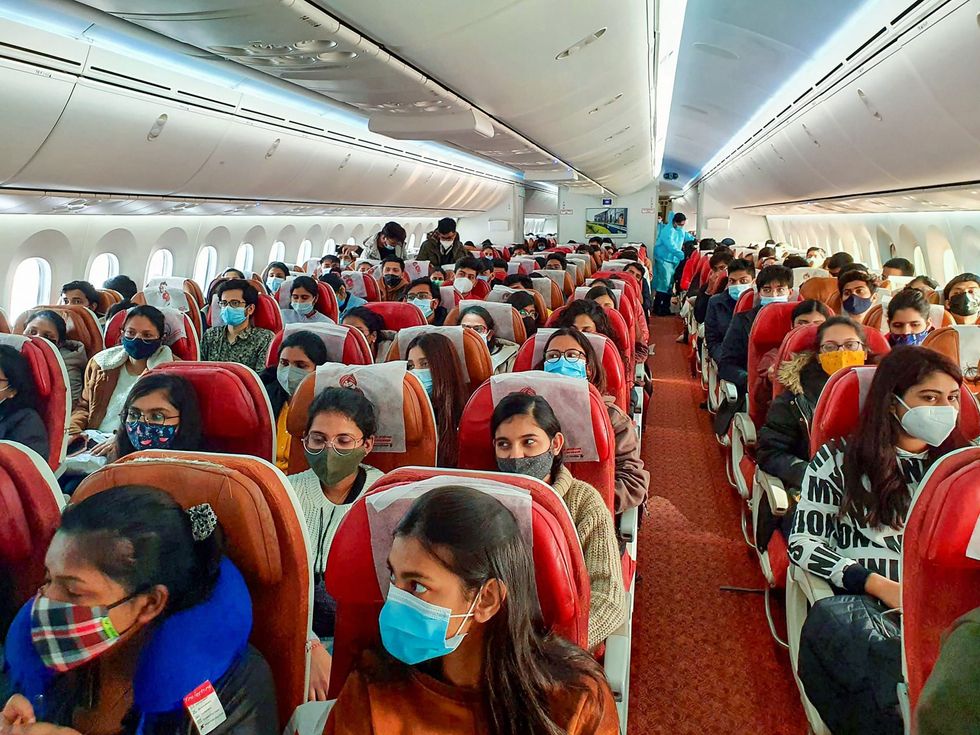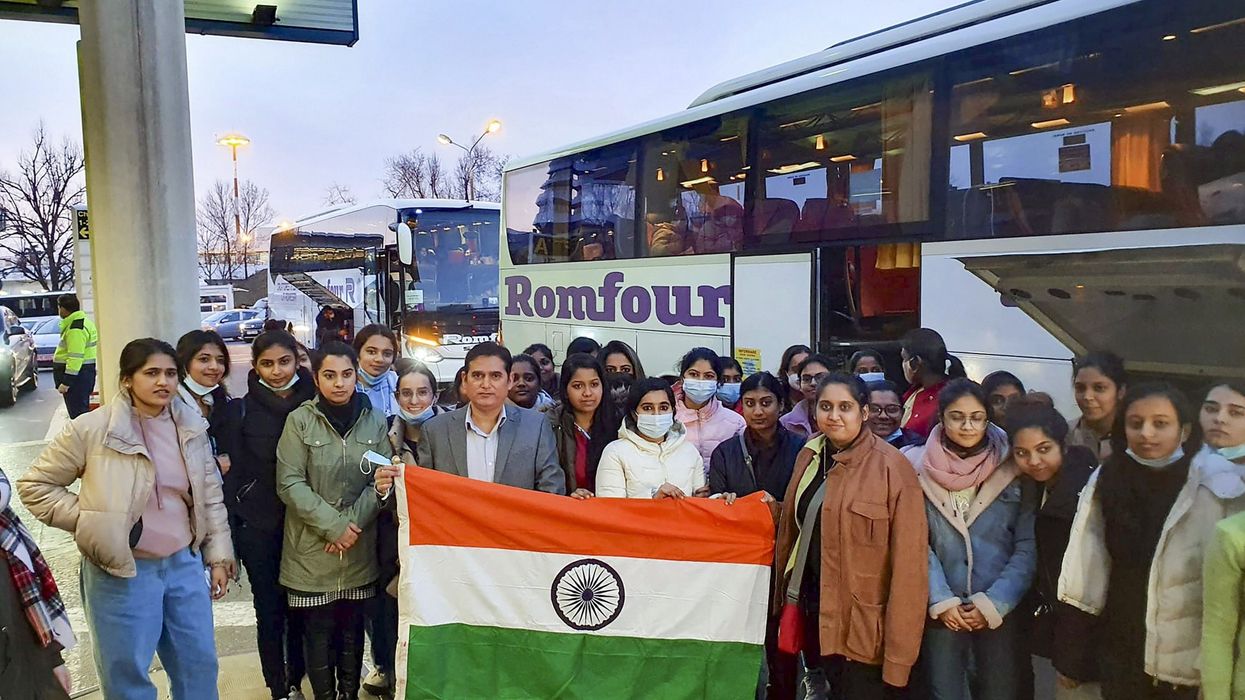THE Ministry of Education (MoE) appealed to the Indian students stranded in Ukraine on Saturday (26) to follow all the guidelines issued by the Ministry of External Affairs (MEA) and the Indian embassy.
It also assured the students that all possible efforts are being made by the government to bring them back from Ukraine.
"Government of India is making all possible efforts to bring our students back from Ukraine. We appeal to our students to follow all advisories and guidelines being issued by the MEA and the Indian embassy," the MoE said in a tweet.
About 16,000 Indians, mostly students, are stranded in Ukraine as Russia's invasion of the east European country entered its third day on Saturday. Many of the students are studying medicine in Kharkiv and Kyiv. About 2,500 of them are from Gujarat and 2,320 from Kerala.
As tensions escalated in Ukraine and worried families back in India counted the hours till their children returned home, several state governments requested the Centre to make immediate arrangements for their safe evacuation.
'Do not move to border posts'
With Russian troops advancing on Kyiv and other key cities, India on Saturday (26) also asked its nationals stranded in Ukraine to exercise caution at all times and not move towards any border post to exit the country without prior coordination with its officials.
The Indian embassy in Ukraine issued a fresh advisory for the Indian citizens as the overall ground situation deteriorated further with gunfire, bombings and missile attacks continuing to rock various parts of the country, including its capital Kyiv.
The embassy particularly advised the Indians staying in the eastern parts of Ukraine to remain in their current places of residence and stay indoors or in shelters as much as possible.
Foreign secretary Harsh Vardhan Shringla had on Thursday said there were around 20,000 Indians in Ukraine and nearly 4,000 of them have returned to India in the last few days
"All those currently in the Eastern sector are requested to continue to remain in their current places of residence until further instructions, maintain calm and stay indoors or in shelters as much as possible, with whatever food, water and amenities available and remain patient," the embassy said.
"Avoid unnecessary movement. We once again remind you to exercise caution at all times, be aware of your surroundings and the recent developments," it added.
It also asked all Indians not to move to any border point without prior coordination with Indian officials.
"All Indian citizens in Ukraine are advised to not move to any of the border posts without prior coordination with the government of India officials at the border posts and the emergency numbers of the embassy of India in Kyiv," the embassy said.
It said the situation at various border checkpoints is sensitive and the embassy is working continuously with the Indian missions in the neighbouring countries for a coordinated evacuation of the citizens.

"Embassy is finding it increasingly difficult to help the crossing of those Indian nationals who reach border checkpoint without prior intimation," it said.
The embassy said people staying in the western Ukrainian cities are relatively in a "safer" environment with access to basic amenities.
"Please note, staying in western cities of Ukraine with the access of water, food, accommodation and basic amenities is relatively safer and advisable compared to reaching border checkpoints without being fully abreast of the situation," it said.
India on Friday (25) managed to set up camp offices in Lviv and Chernivtsi towns in western Ukraine to facilitate the transit of Indians to Hungary, Romania and Poland.
India also positioned teams of officials at the Zahony border post in Hungary, Krakowiec as well as the Shehyni-Medyka land border points in Poland, Vysne Nemecke in the Slovak Republic and the Suceava transit point in Romania to coordinate the exit of Indian nationals from Ukraine.
Ministry of External Affairs (MEA) spokesperson Arindam Bagchi said on Friday (25) evening that the first batch of evacuees from Ukraine reached Romania via the Suceava border crossing on Friday (25) and Indian officials will now facilitate their travel to Bucharest for their onward journey to India.
Hours before the first batch exited Ukraine, the Indian embassy in Kyiv said over 470 students will leave the country and enter Romania through the Porubne-Siret border on Friday and that it is moving them to neighbouring countries for their onward evacuation.
India is trying to evacuate its nationals through Ukraine's land borders with Hungary, Poland and Slovakia as the Ukrainian government has closed the country's airspace following the Russian military offensive.
It is learnt that managing visas for the stranded Indians to enter Romania, Poland, Hungary and Slovakia has become a major challenge for the Indian officials in these countries.
The requirement of Covid-19 vaccination certificates has emerged as another issue for the entry of Indians into these four countries.
(PTI)






 Shah Rukh Khan and Kajol unveil the DDLJ statue at Leicester Square X/
Shah Rukh Khan and Kajol unveil the DDLJ statue at Leicester Square X/ 






